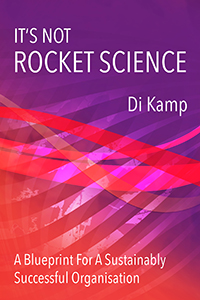It is easy to be an inspiring leader, full of enthusiasm, when things are going right. It is when things start to go wrong that our true mettle shows through..
When we work with leaders, we find that they really understand the principles of leadership, and have a genuine desire to put them into practice. Yet they slip back into old habits of control and blame when things get tough, back in the workplace.
Why does this happen? Two reasons:
- We have all been well trained in the old habits, so they are your default position,. When we have time to think, we can switch on a different behaviour, but when the pressure is on, we have an automatic response.
- Other people expect us to behave as we always have done. Even if it is not particularly constructive behaviour, they at least know how to react if we do what we have always done. So if we step out of that, they often try to push us back into the familiar.
So how do we change our habits?
The easiest way to change a habitual behaviour is to consciously practise at regular intervals. So if you say to yourself that this morning is going to be my time for being the excellent leader I know I can be, and set yourself a time limit, it begins to get into the muscle. Don’t make the time too long – then it begins to get strenuous, just like when you take up a new form of exercise, and you will get disheartened.
There is one caution to this – sometimes we slip even when we have made a conscious decision not to, and then we tend to beat ourselves up for it even more than usual! This is not at all helpful, because the way our brain works is that every time we go through an experience again in our memory, we are rehearsing to do the same thing again, so reliving the not so useful behaviour is a great way to train yourself to do it again next time! Instead, just recognise that your behaviour was not what you intended, and run through the scenario as you would have liked to play it. This is excellent training for handling it better next time.
It also really helps if you can find a mentor – someone whom you respect and trust, who is further along on the path to being an excellent leader. Such a person provides the encouragement, advice and support that can make it so much easier to grow yourself.
Most of us don’t suddenly turn into excellent leaders overnight – it takes practice. Go gently with yourself, gradually introducing more and more of the behaviours you want to demonstrate and you will be surprised by how the ‘new you’ begins to grow!



